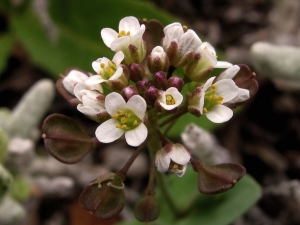Genomic analyses reveal of self-incompatibility in Capsella

This project aims at characterizing the genetic basis and timing of loss of SI in the self-fertilizing crucifer species Capsella orientalis using complementary approaches (long read sequencing of multiple full-length S-haplotypes, genetic mapping, population genomics and expression analyses).
Plants have many intricate mechanisms to promote outcrossing. A common mechanism is self-incompatibility (SI), which allows recognition and rejection of self pollen through male and female specificity components, encoded at the S-locus. Despite the benefits of outcrossing, SI has repeatedly been lost. Theory predicts that mutations disrupting SI spread at different paces depending on whether they affect male or female functions, involve unlinked modifiers and whether they are dominant or recessive, but the importance of parallel changes for loss of SI remains unclear. The crucifer genus Capsella offers an excellent opportunity to study multiple transitions from outcrossing to self-fertilization, but so far, little is known about the genetic basis and timing of loss of SI in the self-fertilizing diploid Capsella orientalis.
Collaborators
Tanja Slotte: Department of Ecology, Environment and Plant Sciences, Science for Life Laboratory, Stockholm University, SE-106 91 Stockholm, Sweden,
ClaudiaKöhler : Department of Plant Biology, Swedish University of Agricultural Sciences & Linnean Center for Plant Biology, SE-75 007 Uppsala, Sweden,
Vincent Castric Unité Evo-Eco-Paléo (EEP) - UMR 8198, CNRS/Université de Lille - Sciences et Technologies, Villeneuve d'Ascq Cedex, F-59655, France, 5Equal contributions
Responsible
William Marande, Caroline Callot
